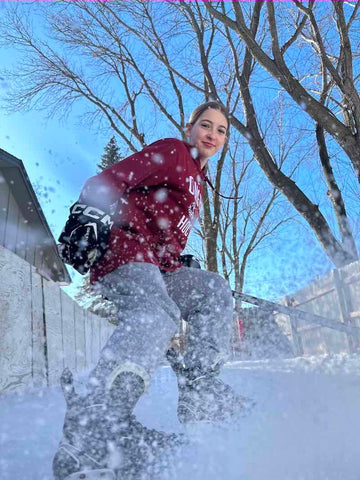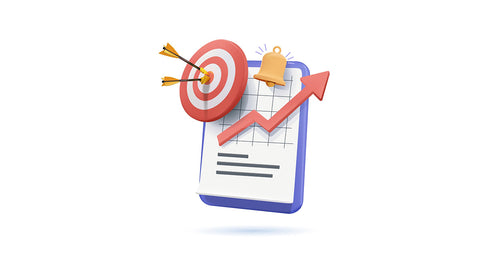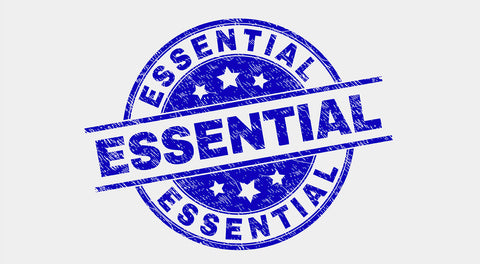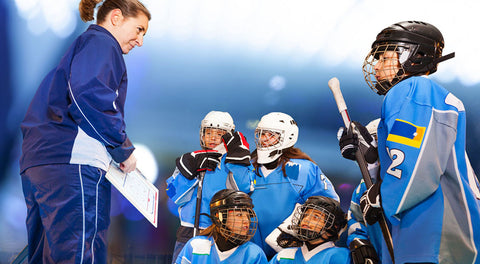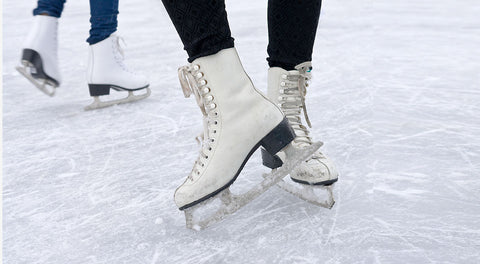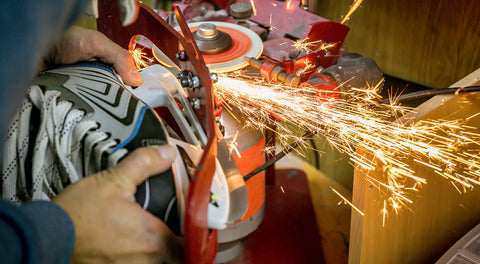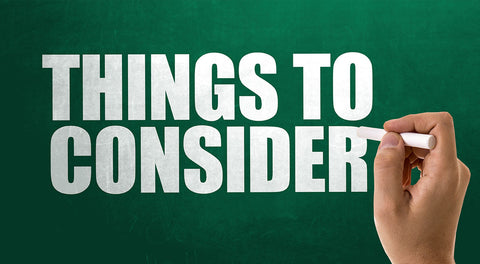How Slide Board Exercises Can Transform Your Skating
There are many ways athletes can maximize their workouts with the use of a slide board.
The average NHL hockey player skates up to 5 miles in one game, with most players exceeding that mark.
To add to that, they cover this distance carrying up to 15 pounds of gear, including skates and sticks......(quite a load!)
Figure skaters and speed skaters also cover extensive distances while training in the slightly crouched skating position, with some going up to 30/mph.
Transform Your Skating And Enjoy Maximum Glide On Our Slip Slide Board
Performing these exceptional feats requires high-level training, even when you’re not on the rink. Hence......the Slide Board Workout!
This simple but effective training tool can quickly become your secret weapon to outperform the competition.
What is a slide board?
A slide board is a rectangular, multi-use training product that provides users with a range of benefits through sliding.
Slide boards vary in size, with some as long as 10 feet.
On average, slide boards are between 18" to 24” wide.
The base is often a rigid board made of plywood, plastic or other durable material.
The top part of most standard slide boards is made of a slick PVC.
With PolyGlide’s "Slip" Slide Boards, we’ve leveraged our synthetic ice formulation for a slide that feels close to natural ice.
In addition, the slide board has foot stops on each side which are often adjustable to bring variety to your exercises and target specific muscle groups.
The adjustable bumpers can also accommodate taller users to get a smooth workout.
Using your slide board
You’ll first need to put on special shoes or booties to use your slide board.
The footwear allows you to “slide” along the board.
First, you will stand on one end of the board, next to the bumper.
Then you will perform a lateral slide, shifting your body weight from one end to the oth
Finally, push off with the foot closest to the opposite bumper and slide with the trailing leg.
Perform the exercise in a slightly crouched stance that will mimic a skater's position.
Hockey players can also use the slide board with their hockey stick and gloves for a more natural stride feel.
If the sliding stance is not your speed, you can change it up and perform exercises that impact your upper body.
Slide boards are popular as they have a range of health and exercise benefits.
The Benefits of Slideboarding
1. Low-impact Exercise on Lower Extremities
When you first begin moving on the slide board, you will notice the smooth, fluid motion.
This motion places minimal impact on your hips, knees, and ankles.
However, high-impact exercises like jogging, running, and riding can place strain on your joints.
These exercises are useful, but increased inflammation can limit movement and recovery over time.
A slide board workout is a fabulous change of pace, providing a low-impact workout that’s high quality.
You can get the same results for your hamstrings, glutes, and calves in some cases.
2. Skip the Gym. Multiple exercises in One Device
Strength and conditioning are an essential part of hockey, figure skating, and speed skating.
That means spending time in the gym to work on specific muscles that give you an edge on the rink.
However, if you have limited time, you can skip the gym and get a full-body workout on your slide board.
The panel helps with your core, glutes, hamstrings, and calves.
You can even incorporate pushups and mountain climbers to target the shoulders and arms.
The slide board can easily turn into a total exercise system.
3. Increase Your Agility and Endurance
Skating for extended periods and distances is essential in ice sports.
Hockey and other sports also demand agility, especially the ability to change direction quickly.
Performing repeated lateral movements on the slide board increases your cardiovascular health, as it is a great aerobic workout.
The exercise also requires balance and concentration, which will show in your lateral agility.
4. Speed Things Up (thanks to balance)
Athletes appreciate slide boarding as the training tool tests their balance.
As you go faster on the slide board, you must be aware of your body and use
your lower extremities to keep yourself set.
When you lace up your skates and hit the ice, the movement translates to your game.
You’ll see an immediate improvement in your speed since you could improve
your balance and strength without damaging your joints.

5. Strengthen Your Core
Any hockey player will tell you that core strength is their secret weapon:
the stronger your core, the more powerful your shot.
The stronger your core, the easier it is for you to shrug off your opponent.
It even allows you to rotate, speed up, slow down and protect the puck.
When we think of core strength, we often think of our abs.
However, your core wraps around your entire lower trunk and includes your lower back and oblique muscles.
Training your core can be time-consuming, and it is easy to miss out on some of these essential muscle groups.
With a slide board, you get a full core workout that targets these muscles in a way that few other devices can
6. An Excellent Physical Therapy Tool
Slide boards are popular with physical therapists.
After a sports injury, athletes need several months in rehabilitation to strengthen the damaged area.
These exercises must be low impact to avoid reaggravating the injury.
Physical therapy often starts 1-2 months after a major lower-body injury like an ACL tear, hip tear, or a torn Achilles.
A slide board helps the athlete gradually return to functional movements.
The device will help with coordination, core strength, balance, and endurance.
More importantly, specific exercises can strengthen the muscles around the injury for better support.

7. Helps in Several Other Sports
We have been mentioning hockey and skating a lot in this article.
Yet, slideboarding is not just for ice sports.
Athletes in all sports see fantastic results with slideboarding.
It adds some much-needed variety to their regimen while providing the same excellent results.
The tool is a great way to recover after training for hours.
And like hockey players, other athletes can strengthen their core and lower bodies with a slide board.
For instance, soccer players can improve their speed, agility, and endurance, vital for the sport.
Other sports that can benefit from a slide board include skiing, basketball, lacrosse, cross country running, and much more.
8. Train anywhere and everywhere
Sometimes we don’t have the time to hit the gym, but we still need to get a workout.
Your slide board only needs a few feet of space for you to get a complete workout.
Use it in your driveway, on the deck, or in your backyard.
Some slide boards are portable, allowing you to use them on business trips or get in a morning workout on vacation.
Wherever you can find a few feet of space, you can use your board!
9. Durable and cost-effective tool.
Since the pandemic, there has been a boom in at-home exercise equipment.
Bikes, treadmills, and mirrors on walls are now commonplace, all with built-in apps to help you stay motivated.
While these concepts work, most people are priced out of these expensive devices.
A slide board can provide much of the same benefits at a fraction of the cost.
The tool is also durable, lasting for several years with minimal maintenance, compared to other complicated exercise tools.

10. Improves skating technique and posture
The original concept of the slide board was designed by speed skaters.
These athletes needed a way to practice posture and technique in the off-season.
The first slide boards were large planks of wood covered with wax.
Speed skaters would spend hours working on these boards just to tweak their technique.
That simple change meant a fraction of a second needed to beat their opponent at the line.
With your slide board, you can work on the minor details necessary to improve your skating speed and technique.
You can work with your coach or watch yourself in a mirror to correct the things impacting your skating.
11. Burn more calories compared to cardio
A 30-minute session on a slide board increases your heart rate, revving up your calorie-burning abilities.
When you include other exercises like pushups, mountain climbers, and lunges, you can also help build upper body strength.
Adjusting the bumpers can increase the intensity, giving you a full-body workout that can burn over 700 calories.
Compare this to jogging or other cardio exercises, which can average between 400 and 500 calories.

What to consider before choosing a slide board
With all these exceptional benefits, choosing a slide board as part of your training regimen is a no-brainer.
However, before you add the first one you find to your online shopping cart, there are some factors you must consider.
First, make sure you pick up the right length to your height.
Athletes over 6 feet should get a slide board of at least 8 feet to maximize results.
Shorter slide boards work great for low impact and high rep workouts..
You should also consider the type of material used, as this will determine performance and durability.
Our special infused polymer boards can give you a controlled skate, like ice.
Since it is of similar construction to our synthetic ice tiles, you should have a training tool that lasts for years.
Other factors you should consider include design, stability, and price.
What surfaces can you use on a slide board?
Slide boards are flat, rectangular exercise tools that can work on almost any surface.
For indoor use, carpet, rugs, and tiles are best. These surfaces ensure the slide board stays in one place.
If you’re concerned about your hardwood floors, you can place the slide board on a yoga mat or exercise mat.
If you are still skeptical, try placing the slide board next to a wall to prevent excess movement.
Outdoor use is possible as long as you use a level surface.
Your yoga mat may come in handy on grassy areas to keep things level.
Driveways, decks, and porches are other great options.
If the bottom of the slide board or bumpers develop scratches over time, use the exercise mat for added protection.

How do you take care of your slide board?
Slide boards need minimal care and can last for years before a replacement is necessary.
If you use it often, you will notice an accumulation of dirt.
Clean the area with warm water and a cotton or microfiber cloth.
Use a dry cloth to remove the excess moisture.
Microfiber "Sock Mops" are also a fun way to keep your board clean and slick.
Some slide boards come with a slip surface conditioner.
This helps to restore that smooth glide you enjoyed when you got it the first time.
Add the conditioner to a spray bottle and apply a light mist, making sure to wipe off any excess.
Caring for your slide board and reapplying your slip agent ensures that it lasts for years.
Can you use socks on a slide board?
You need special booties or slip-on covers to perform slide board exercises.
Some providers provide these covers, but if they are not available, you will need to improvise.
Wool socks are an option and work just as well as the conventional slip-on covers.
Conclusion
If you are looking for a simple, low-impact method to improve your skating, slideboarding can help.
Spending just 30 minutes on the board can improve your skating speed, agility, and balance.
You also get a fantastic workout that strengthens your core, glutes, and hamstring muscles.
A slide board will serve you well even when if you get injured, helping you to recover faster.
Our slide boards contain our proprietary polymer that gives you an unbeatable slide.
More importantly, you can use it on any surface, so you are not bound by location.
Slide into this new way of training by clicking on the link or reaching out to our team.
At PolyGlide Synthetic Ice, we will ensure you receive a slide board that fits your fitness goals.


















